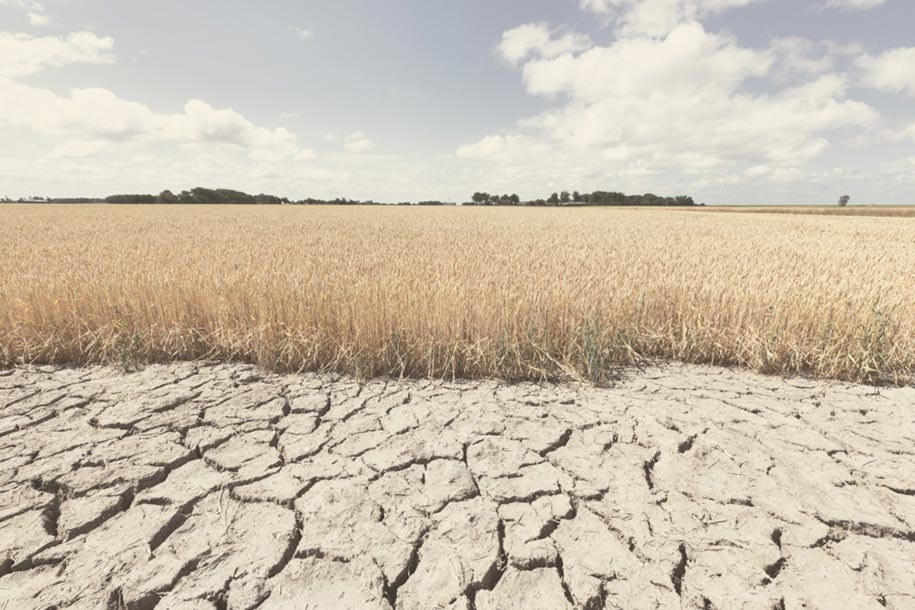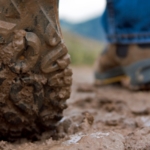What Is the Difference Between Weather and Climate?
We've all heard these two words and often use them interchangeably. But they're not the same! We explain how they're different and why it matters!

Weather and climate. We’ve heard these words countless times before, yet it can be difficult to sort out exactly how the two differ, or why this difference matters. We break it down.
Weather
Weather is how the atmosphere is behaving now.

While both weather and climate describe the atmosphere’s conditions (like how hot or cold, wet or dry, sunny or cloudy it is), weather tells us how the atmosphere is behaving at this very minute, and how it will behave in the near future—in the upcoming hours, days, and weeks. The weather is always in a state of flux because warm fronts, cold fronts, high pressure, and low pressure continually come and go, temporarily altering the atmosphere as they do.
Weather Predates Climate
Another way weather differs from climate? It is the older of the two sciences. One of the earliest-known texts about the atmosphere—a book titled Meteorologica, which was written by the ancient Greek philosopher Aristotle as long ago as 340 BC—attempts to explain how clouds, rain, snow, wind, and a host of other types of weather work. While Aristotle also talks of torrid, temperate, and frigid climate zones in his book, the ins and outs of climate weren’t explored in depth until the 1800s.
Over Time Weather Becomes Climate
Weather observations are taken multiple times a day (usually every hour) in order to keep up with any changes as they occur. When a particular day ends, its temperatures, humidity, cloudiness, etc. become an afterthought, as our attention moves to the next day’s weather, but these outdated observations are never truly forgotten. Over long periods of time, patterns begin to appear in collections of individual weather observations. And recognizing patterns in past weather can offer clues about what conditions to expect on similar dates and at similar times of the year down the road. These average weather patterns are what we call climate.
Climate
Climate is how the atmosphere tends to behave, on average.

In recent decades, the word “climate” has become synonymous with “climate change”—the variation of regional climate over time. But climate, plain old climate, describes what the average weather is like over long stretches of time, such as months, years, and decades.
Every place on earth has a climate type—a label that expresses the average conditions typically experienced throughout the year. For example, if a region sees high temperatures year-round, it might have a tropical climate. Or if it rarely sees rainfall, it might have a desert climate.
Our planet also has a “global climate,” which describes the temperatures, precipitation, etc. we experience, on average, worldwide.
Natural Climate Influencers

Since climate is associated with longer periods of time, climate conditions tend to remain fairly steady from one year to the next. A few factors that determine climate include:
Land Features
Proximity to oceans and large bodies of water generally result in milder climates. In contrast, landlocked areas are typically associated with extreme (hotter, colder, drier) regional climates.
Elevation
The farther up you go in the atmosphere, the more air pressure and air temperature drop; so, the higher the elevation, the cooler a location’s climate will be.
Vegetation
Plants and trees cool the Earth’s surface through transpiration—the “breathing out” or evaporating of excess water from plant leaves. Because it takes heat energy to evaporate liquid water into water vapor, transpiration pulls heat from the surrounding air, causing the air to cool. So if you live in an area with lots of vegetation the heat is normally not as extreme especially during the summer.
Solar Output
Every 11 years or so, the Sun—Earth’s number one energy source—goes through periods when its surface is more or less active. During years when the Sun’s surface activity peaks (solar maximums), our global climate warms slightly, while in less active years (solar minimums), the climate cools.
Earth’s Orbit
How the Earth journeys around the Sun also affects climate. If Earth follows an elliptical-shaped path around the Sun, global climate will be warmer than when Earth’s path is more circular. Earth currently follows an elliptical path around the Sun, however, a century ago, a Serbian scientist named Milankovitch hypothesized a 100,000-year cyclical change in the shape of Earth’s orbit around the Sun, which can cause our orbit to vary from nearly a perfect circle to elliptical. The reason for the change is primarily due to the gravitational pulls of Jupiter and Saturn exerted on our planet over a very long interval of time.
Volcanoes
When volcanoes erupt, they spew a mix of rock, dust, ash, and gases miles high into the air. Depending on how violent the eruption is, this volcanic ash can hang in the air and spread great distances, shading Earth’s surface from the Sun’s incoming energy and cooling Earth’s climate for months to years. Read “1816: Year Without A Summer.”
All of these are natural (Mother Nature-caused) contributors that influence the climate, but there are unnatural (human-caused) influences, too.
Human-Made Climate Changers

Construction
Bare ground and land that is covered by concrete and asphalt soak up more sunlight than natural surfaces and can store this heat for hours longer. This build-up of heat can make air temperatures several degrees warmer in cities than in surrounding areas, which in turn can warm the climate.
Greenhouse Gases
Greenhouse gases (like water vapor and carbon dioxide) are excellent at trapping heat in the atmosphere. Without naturally occurring greenhouse gases, the temperature on Earth would be uncomfortably cool, but when excess gases are released through the burning of oil, coal, gas, and other fuels, the climate warms significantly.
Why Do Weather and Climate Matter?
It’s easy for most to see why weather matters: it has an immediate effect on daily activities. And since we’re often very interested in what will happen today than what’s in store for next month or next year, climate can seem somewhat useless. But think about it: have you ever wondered what clothing to pack for next month’s vacation? Wondered if a certain plant would thrive in your garden? If so, then climate means just as much to you as weather … you simply might not have realized it until now.
Be sure to check our long-range weather planner so you’re always prepared.

Tiffany Means
Tiffany Means is a freelance writer and a degreed meteorologist. She specializes in weather forecasting and enjoys making the subject of weather (and the science behind it) more relatable. She currently resides in the Blue Ridge Mountains of North Carolina.











